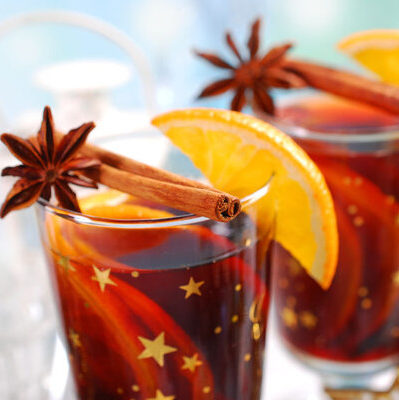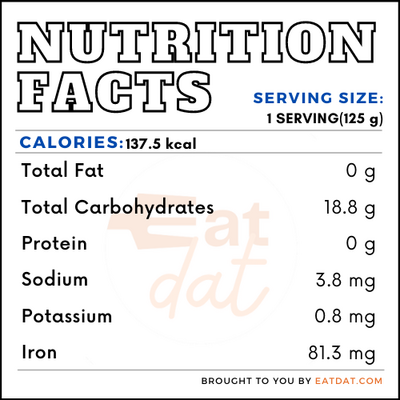
Mulled Wine
also known as Glühwein
What is Mulled Wine?
This drink is to be served hot and is a traditional European winter drink because of its warmth and festive nature.
- European Christmas markets, particularly those in northern regions, are famous for their mulled wine.
- Non-alcoholic versions of this wine are also available, and are made by substituting red wine with fruit juice.
Some of the best wines to make this drink with are:
- McManis Pinot Noir
- Underwood Nouveau
- Barista Pinotage
- Bodega Garzón Tannat
- Leah Jorgensen Cellars Nisse + Hyggi
- Charles Smith The Velvet Devil Merlot
- Gundlach Bundschu Tempranillo Rosé
- Cascadian Outfitters Red Blend
- Rex Goliath Zinfandel
- Evolúció Blaufränkisch
Origin of mulled wine
This wine may have originated with the ancient Romans around 2,000 years ago, when they started to drink warm, spiced wine to ward off winter illnesses. With the extension of the Roman Empire, the practice spread around Europe. The first written recipe for mulled wine was found in the 1340 English cookbook called Forme of Cury. However, the beverage was known as Ypocras until the 1600s, when it became ‘mulled wine’. The first commercial bottle was produced in 1956 by Rudolf Kunzmann.
Nutrition
One serving (125g) of Mulled Wine contains:

This beverage generally uses red wine, which contains a number of polyphenols such as resveratrol, anthocyanins, catechins, and tannins, which are beneficial for health. Resveratrol, especially, benefits cardiac health. Regular and moderate consumption of red wine can decrease the risk of cancer. Also, it is effective in reducing the prevalence of blood clots and thrombi. Additionally, the spices in this wine have a host of health benefits. Many spices have antioxidant, anti-microbial, and anti-inflammatory effects, as well as potential protection against cardiovascular disease, neurodegeneration, type 2 diabetes, and cancer.
However, overconsumption of wine can result in major health complications. These include obesity, change in the brain’s functioning patterns, liver cirrhosis, pancreatitis, heart problems, strokes, different types of cancers, as well as an impact on overall immunity. It is recommended to consume alcohol responsibility and in moderation.
Commercial production
This beverage is prepared by mixing red wine with water, lemon juice, sugar, spices, and fruits, and allowing it to simmer. Then, the wine is filtered to remove the impurities and cooled before bottling. Fruity wines are best for preparing this beverage. After that, the wine must be reheated gently before serving. Homemade drinks can be stored in the refrigerator in an airtight container for up to 3 days. Store bought ones have an indefinite shelf life but must be kept in a cool and dry place, like any other red wine.
Mulled wine recipes
Recipes for this beverage can vary from region to region. Some common flavorings used are vanilla, orange peel, apple, fig, ginger, and raisins. The classic recipes use red wine but other liquors such as brandy, cognac, rum, vodka, and sherry may also be added. Here are a few recipes to try:
- Classic Mulled Wine
- Honey Mulled Wine
- Orange Spiced Wine
- Braised Red Cabbage
- Mulled Winter Soup
- Mulled Wine and Beef Casserole
- Oxtail Stew
- Mulled Wine Cookies
- Sorbet with Clove Biscuits
- Jelly Cookies
- Chocolate Cake
FDA regulations
Alcohol is regulated by the TTB (Alcohol and Tobacco Tax and Trade Bureau) unless it is an artisanal product, in which case it is regulated by the FDA. There are strict regulations regarding the governing of any type of wine. Red wine is defined as wine produced by the normal alcoholic fermentation of the juice of grapes and is identified by color. Mulled wine is defined as a wine containing spices, and requires a statement of composition.
References
Lynne Murphy, The Many Ingredients of ‘Mulling’, The Wall Street Journal, https://www.wsj.com/articles/the-many-ingredients-ofmulling-1513269220
Allison Sheardy, A Complete Storage Guide for Mulled & Spiced Wine, Pinot Squirrel, https://pinotsquirrel.com/mulled-wine-storage/
Snopek, Lukas et al. “Contribution of Red Wine Consumption to Human Health Protection.” Molecules (Basel, Switzerland) vol. 23,7 1684. 11 Jul. 2018, doi:10.3390/molecules23071684, https://www.ncbi.nlm.nih.gov/pmc/articles/PMC6099584/
Vázquez-Fresno, Rosa et al. “Herbs and Spices- Biomarkers of Intake Based on Human Intervention Studies – A Systematic Review.” Genes & nutrition vol. 14 18. 22 May. 2019, doi:10.1186/s12263-019-0636-8, https://www.ncbi.nlm.nih.gov/pmc/articles/PMC6532192/
